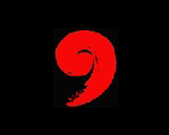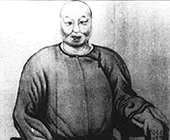

The Origin of Baguazhang
The Origin of Baguazhang ( 八卦掌起源 )
形意八卦太極為內家三大名拳, 其中八卦掌一門是近代廣為流傳的一種內外兼修的功法.
Xingyiquan, Baguazhang and Taijiquan are known as the three famous internal martial arts. Among these, Baguazhang is a method of internal and external training that was recently passed down.
八卦掌的開山祖師爺 董公, 字海川, 生於清代嘉慶九年十月, 卒於光緒七年十月. 董公自幼酷愛武術, 青年時代就以賦有神力武勇名聞鄉里. 清咸豐年間, 因事後外出遠遊, 歷盡吳 ' 越 ' 巴 ' 蜀和江皖各大名山 ( 包括江蘇南部 浙江北部 四川東部及安徽省 ) 尋訪名師高友. 其間受道家修練術的啟示隨而結合武術攻防招術創編成獨特的功法練習, 轉掌 ----- 八卦掌雛形.
Baguazhang's founder, Dong Haichuan, was born in the ninth year, tenth month of the Qing dynasty Jiaqing reign. He died in the seventh year, eleventh month of the Guangxu reign. Since he was a child he loved the martial arts. In his youth he became famous in his home village for his gifted strength and martial valor. In the middle of the Xianfeng reign, he left home to travel. He traveled to all the famous mountains and provinces, including southern Jiangsu, northern Zhejiang, eastern Sichuan and Anhui, looking for famous teachers and gifted martial artists. During this period he became influenced by Daoist training methods and after this he combined the offensive and defensive methods of the martial arts with the Daoist training to create a unique method called Zhuanzhang (Turning Palms), this was the infancy of Baguazhang (Eight Trigram Palms).
董公到京都後, 先在肅王府當差, 府中有個旗人叫全凱亭在一次偶然窺見董公練習武技, 因慕董公武技高深, 跪求錄為弟子, 此後董公的武技漸為人知. 從學者甚眾, 以北京為發源地, 隨後以此中心逐漸向外省傳播, 不數年就傳遍各地, 形成了一大流派.
After arriving in Beijing, he got a job at the house of the prince of Su. In the house there was a Manchu named Quan Kaiting who saw Dong Haichuan practicing martial arts one day and admired his incredibly high skills. Because Quan Kaiting admired the high skills of Dong Haichuan, he knelt down before Dong Haichuan and begged to become his student. From that time, Dong Haichuan's fame and kung fu began to spread widely. Many students came to study with him. His Baguazhang slowly spread from the center of Beijing out to the other provinces; it spread quickly and became famous in a very short time.
八卦掌初傳時其形態像手推石磨, 叫推磨圈 被人稱為磨門, 及後發展成八個基本掌勢, 稱為八掌, 每一母掌按其前後左右上中下發展, 演練增加成六十四掌. 因與易經中八卦的變化有相似處, 董公及門人後來便定名為八卦掌, 現在流傳的名稱有八卦掌, 八卦連環掌, 八卦遊身掌, 游身連環八卦掌等.
In the beginning, because the movements of Dong Haichuan's art looked similar to that of a man moving a stone rice-grinding wheel, others began to call them Mo Men (the grinding "gate" or sect). Afterwards, he developed eight basic palm movements called the eight palms. Each of these mother palms when changed to move forwards, backwards, to the left, to the right, upwards, downwards and centrally became the sixty-four palms. Because there was similarity to the changes of the Yi Jing (the Book of Changes), Grandmaster Dong and his followers decided to call it Baguazhang. Other modern names that spread for the art are Baguazhang, Bagua Continuous palm, Bagua Swimming Body palm, Swimming Body Continuous Bagua palm, etc.
八卦掌是以穿走為主要的表達方式, 身法要求閃展騰挪. 練時, 行如游龍, 回身似猴 換步如鷹翻. 表現 內外相合 , 一氣呵成.
The core expression of Baguazhang is that of Chuan Zou (piercing and walking, alike darting into a forest and piercing in all directions, footwork moving in all directions) , the body method's appearance will be that of dodging, spreading, jumping and moving. When practicing you move like a swimming dragon, turn your body like a monkey, change your steps like a soaring eagle, thus expressing a combination of internal and external that moves smoothly without breaking.
